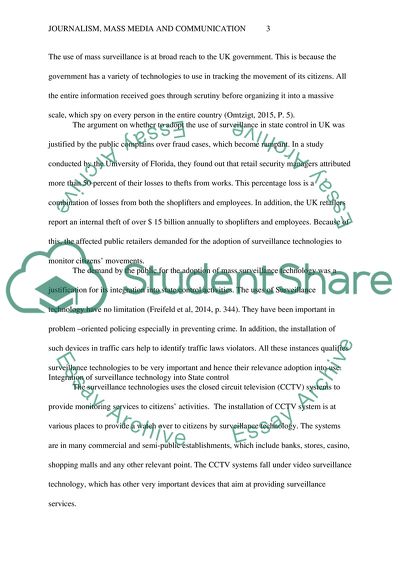Cite this document
(Integration of Surveillance Technology into Strategies of State Control by Public Order in the UK Essay Example | Topics and Well Written Essays - 2250 words, n.d.)
Integration of Surveillance Technology into Strategies of State Control by Public Order in the UK Essay Example | Topics and Well Written Essays - 2250 words. https://studentshare.org/journalism-communication/1873723-how-are-surveillance-technology-integrated-into-strategies-of-state-control-by-public-order-in-uk
Integration of Surveillance Technology into Strategies of State Control by Public Order in the UK Essay Example | Topics and Well Written Essays - 2250 words. https://studentshare.org/journalism-communication/1873723-how-are-surveillance-technology-integrated-into-strategies-of-state-control-by-public-order-in-uk
(Integration of Surveillance Technology into Strategies of State Control by Public Order in the UK Essay Example | Topics and Well Written Essays - 2250 Words)
Integration of Surveillance Technology into Strategies of State Control by Public Order in the UK Essay Example | Topics and Well Written Essays - 2250 Words. https://studentshare.org/journalism-communication/1873723-how-are-surveillance-technology-integrated-into-strategies-of-state-control-by-public-order-in-uk.
Integration of Surveillance Technology into Strategies of State Control by Public Order in the UK Essay Example | Topics and Well Written Essays - 2250 Words. https://studentshare.org/journalism-communication/1873723-how-are-surveillance-technology-integrated-into-strategies-of-state-control-by-public-order-in-uk.
“Integration of Surveillance Technology into Strategies of State Control by Public Order in the UK Essay Example | Topics and Well Written Essays - 2250 Words”. https://studentshare.org/journalism-communication/1873723-how-are-surveillance-technology-integrated-into-strategies-of-state-control-by-public-order-in-uk.


